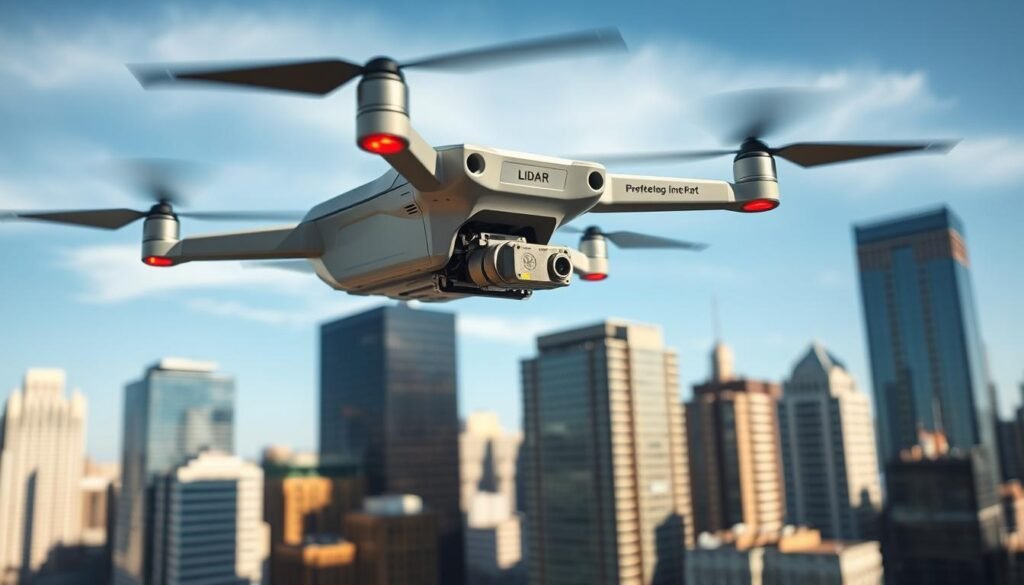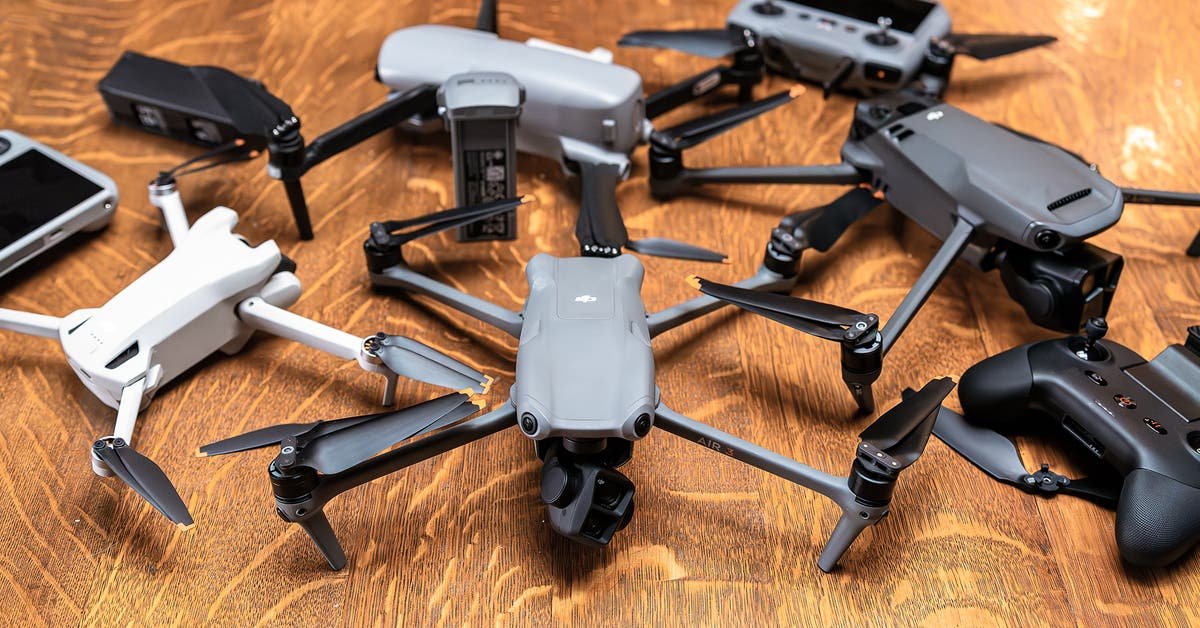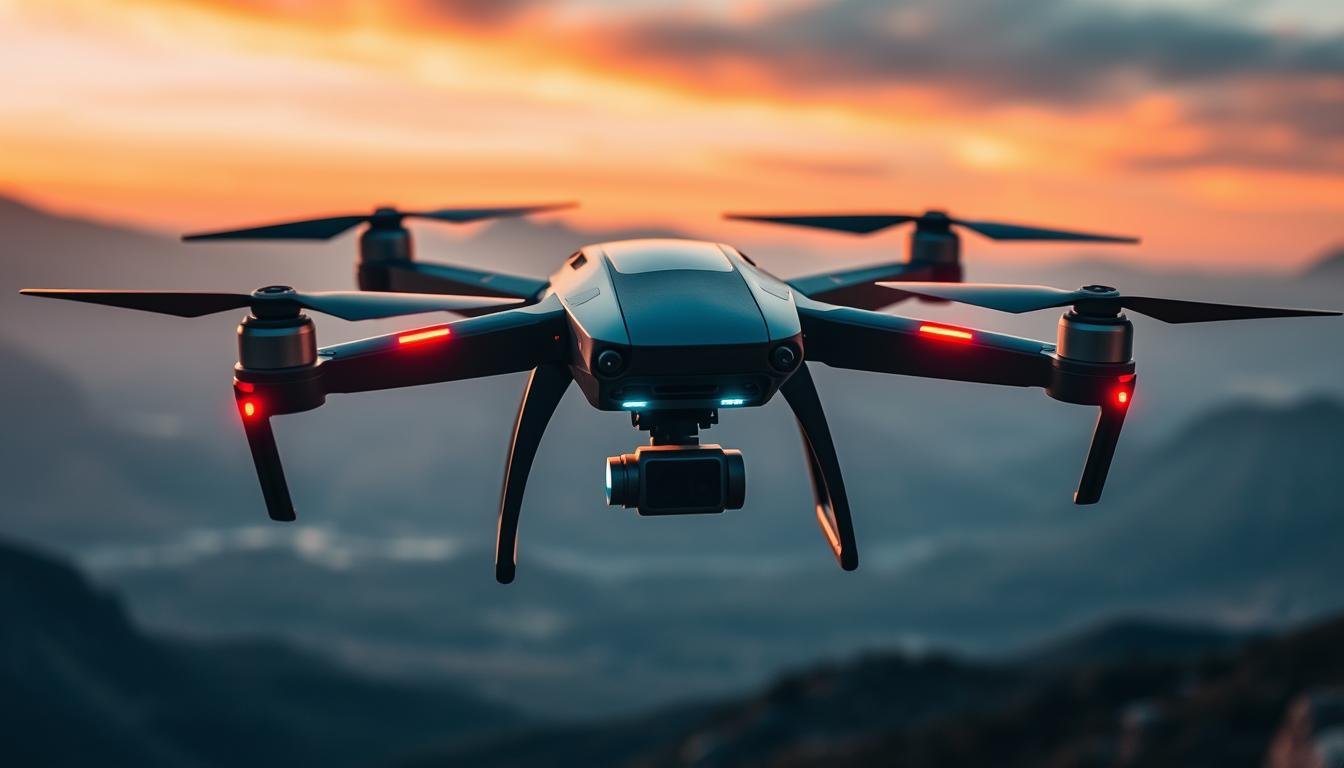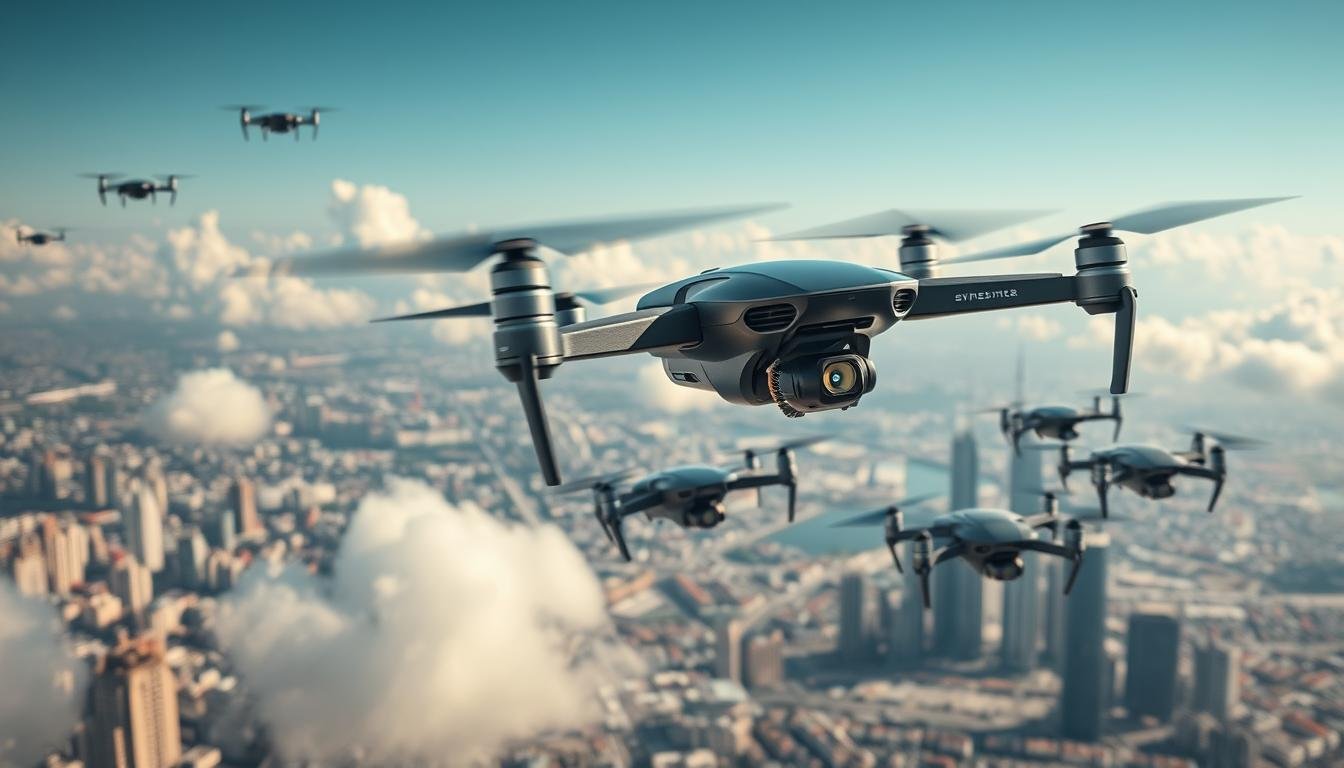As I stepped onto the bustling construction site, the air was thick with the sound of machinery. The hum of progress filled the air. I knew there was a better way to do building inspections and surveys.
Drone LiDAR technology Building Surveys caught my eye. It’s a mix of aerial imaging and 3D mapping. It lets professionals create accurate 3D models of structures and sites. This method is faster, more precise, and cheaper than old ways.
In this article, we’ll look at drone LiDAR’s amazing abilities. We’ll see how it helps in building inspections and site monitoring. We’ll also talk about how companies like Volatus Unmanned Services use it. Get ready to see how this tech changes the way we see buildings and sites.
Key Takeaways
- Drone LiDAR technology enables highly accurate and detailed 3D modeling of buildings, infrastructure, and construction sites.
- This innovative approach offers increased efficiency, precision, and cost savings compared to traditional surveying methods.
- Drone LiDAR can be utilized for a wide range of applications, including building inspections, construction site monitoring, and infrastructure assessments.
- Leading service providers, such as Volatus Unmanned Services, offer cutting-edge drone LiDAR solutions to help professionals streamline their surveying and inspection processes.
- The integration of drone LiDAR technology with Building Information Modeling (BIM) can unlock new possibilities for data-driven decision-making and project management.
The Power of Drone LiDAR Technology
LiDAR, or Light Detection and Ranging, is a game-changing tech. It changes how we do aerial mapping and 3D modeling. With drones, LiDAR sensors quickly gather detailed data. This makes precise 3D models and maps of buildings and sites possible.
Understanding LiDAR: Light Detection and Ranging
LiDAR technology sends out thousands of laser pulses every second. It calculates exact distances for 3D views. This creates a dense point cloud data set for accurate 3D models.
Aerial Mapping and 3D Modeling with LiDAR
Drone LiDAR mapping gives us high-resolution data. It makes detailed 3D maps and models, better than photogrammetry. This mix of drone tech and LiDAR has changed engineering, surveying, and construction. It helps professionals make better decisions with accurate data.
| Statistic | Value |
|---|---|
| Lidar has been around since the 1960s | – |
| Lidar drone hardware can capture millions of reflection points | – |
| Lidar can penetrate areas with up to 90% vegetation cover | – |
| Lidar sensors can have a range of points per second (PPS) from 200,000 to three million | – |
| Vertical accuracy of aerial surveys using lidar can be up to 2/10ft | – |
Drone LiDAR technology is amazing. It captures detailed and accurate 3D data. This tech is changing how we work in many fields. It’s a big deal for surveying, construction, forestry, and archaeology.
Benefits of Drone LiDAR Building Surveys
Drone LiDAR building surveys have many benefits over old surveying ways. They offer accuracy and precision like no other. They make detailed 3D models with centimeter-level precision.
They save time and effort by not needing manual surveys. This helps construction and engineering teams work better. They can finish projects faster and with better quality.
Accuracy and Precision
Drone LiDAR surveys are very accurate, usually within 10 centimeters or less. This is thanks to the advanced sensors and GNSS receivers in the drones. The data they give, like 3D terrain maps and colored point clouds, is very detailed and reliable.
This detail is key for making smart choices in building inspections and construction.
Time and Cost Efficiency
Drone LiDAR surveys are much faster than old methods. They can be done in hours, not weeks or months. This saves a lot of time and money for clients.
Drone surveys also let us safely reach places that are hard or dangerous to get to. This makes surveys more efficient and saves money. Drone LiDAR surveys are a great choice for those who want to work smarter and faster.
Applications of Drone LiDAR in Building Inspections
Drone LiDAR technology has changed building inspections a lot. It gives us very precise and efficient results. With 3D models of buildings, drones help with building inspections, structural assessments, and checking roofs and facades.
Structural Integrity Assessments
LiDAR sensors create detailed 3D models of buildings. These models show the building’s condition well. They help find problems like cracks or structural issues early.
This way, buildings stay safe and last longer. It’s a smart way to check buildings.
Roof and Facade Evaluations
Drone LiDAR is also great for checking roofs and facades. It gives exact measurements and 3D images. This helps find problems like wear and tear or material issues.
It helps plan maintenance and repairs better. This way, buildings last longer and resources are used well.
| Application | Key Benefits |
|---|---|
| Structural Integrity Assessments |
|
| Roof and Facade Evaluations |
|
“Drone LiDAR technology has revolutionized the way we approach building inspections, offering unparalleled precision and efficiency.”
Drone LiDAR helps building inspectors and owners make better choices. It helps focus on maintenance and keeps buildings safe and lasting.
drone lidar building surveys
Drone LiDAR technology has changed how we do building surveys and watch construction sites. It’s not just for checking buildings anymore. It helps in many ways, like mapping sites and figuring out how much stuff is there.
Drone LiDAR gives us accurate 3D data. It shoots out thousands of laser pulses a second. This makes detailed 3D pictures of places, better than old methods.
This tech is fast and saves time and money. It lets teams see how sites are doing and track progress. This helps projects get done right.
Drone LiDAR is also used in other fields like conservation and mining. It helps check power lines and find dangers in mines. This makes work safer and more efficient.
Drone LiDAR is a big help for building and infrastructure work. It lets teams make smart choices and work better. This leads to projects that meet today’s needs.
“Drone LiDAR technology has revolutionized the way we approach building surveys and construction site monitoring.”
Integrating LiDAR with Building Information Modeling (BIM)
The mix of drone LiDAR data with BIM software is very powerful. It makes construction planning, design, and project management better. LiDAR’s accurate 3D models fit well into BIM, giving teams a detailed digital view of buildings or sites.
This combo helps with better planning, finding clashes, and seeing things clearly. It leads to better projects, less redoing work, and smarter choices during building. Using LiDAR and BIM together, builders can make their work easier and projects better.
| LiDAR Technology | Applications |
|---|---|
| Mobile LiDAR | Detailed 3D city models, large-scale infrastructure monitoring |
| Terrestrial LiDAR | Surveying, construction planning, detailed 3D building models |
| Flash LiDAR | Close-range applications, such as in autonomous vehicles |
LiDAR and building information modeling (BIM) together are a big win for builders. They get to use 3D modeling and construction planning for better results. This mix of LiDAR data and BIM helps make decisions easier, cuts down on redoing work, and makes projects better.
“Integrating drone data into BIM systems reduces surveying time and labor, leading to cost savings due to efficient resource allocation.”
The team-up of LiDAR and BIM brings many good things:
- Precise 3D modeling and visualization for better construction planning
- Finding problems early with clash detection and quality control
- Keeping BIM models up-to-date with drone LiDAR data
- Saving money by cutting down on surveying time and using resources wisely
By using building information modeling and LiDAR technology, builders can make their work smoother. They can improve project results and give more value to their clients.
Lidar drone service companies
The need for drone LiDAR services is rising fast. Construction and engineering folks need to pick the right service to get top-notch results. Look at the provider’s tech skills, equipment quality, and data handling. Also, check their service history.
Evaluating Service Providers
Choosing a lidar drone service means checking their experience and tech. The best ones have a skilled team, the latest gear, and can meet your needs.
Volatus Unmanned Services: A Leading Provider
Volatus Unmanned Services leads in drone LiDAR services. They offer top tech, deep knowledge, and a custom approach. Their experience and innovation make them a reliable choice.
Volatus uses advanced drones with LiDAR sensors for detailed data. This helps with building checks and structural reviews. Their team works with clients to create solutions that meet their needs, giving insights for big decisions.
Working with Volatus Unmanned Services lets you use drone LiDAR tech. It makes your work easier, improves projects, and keeps you competitive in a fast-changing field.
Lidar data for professional engineers and surveyors
Drone LiDAR surveys create detailed data for engineers and surveyors. They use this data for many tasks. This includes checking buildings, mapping land, and figuring out volumes.
Tailored Deliverables
Volatus Unmanned Services makes sure their LiDAR data meets each client’s needs. This way, engineers and surveyors get the right info for their projects.
Post-Processing and Data Analysis
Volatus also offers detailed data analysis. This makes the LiDAR data even more useful. LiDAR sends out thousands of laser pulses per second. It captures detailed data in tough terrains.
| LiDAR Applications | Key Benefits |
|---|---|
| Surveying and Construction | Unmatched detail and efficiency |
| Conservation and Forestry | Monitoring water cycle and land topography |
| Utility Infrastructure Maintenance | Reduce power outages |
| Precision Agriculture | Crop management, irrigation optimization, and soil conservation |
| Archaeology | Mapping ancient sites without ecosystem disturbance |
| Mining and Inventory Management | Accurate inventory and safety inspections |
LiDAR is key for many industries. It offers better detail and speed than old methods. Volatus Unmanned Services leads in drone lidar data solutions. They focus on giving lidar data products and detailed analysis to engineering and surveying pros.
Lidar in Construction Site Monitoring
Drone LiDAR technology is key in construction site monitoring. It helps create detailed 3D maps and models. This lets teams survey and map sites precisely.
This data-rich approach gives construction pros a big advantage. It helps them work better and finish projects on time.
Site Surveying and Mapping
Drone LiDAR helps gather accurate topographic data fast. This is great for making decisions and improving project results. It’s fast and covers a lot of ground.
It makes detailed 3D models for surveying and mapping. These models are key for tracking progress and spotting problems early.
Volume Calculations and Stockpile Management
Drone LiDAR is also great for tracking material amounts and stockpile levels. It gives construction pros the data they need to manage resources well. This leads to less waste and more efficient work.
It helps companies save money and finish projects on time. This is thanks to the precise data from LiDAR drones.
| Application | Benefits of Drone LiDAR |
|---|---|
| Construction Site Monitoring |
|
Drone LiDAR has changed the construction world. It gives teams the data they need to make smart choices. This leads to better work, less waste, and successful projects.
Environmental Applications of Drone LiDAR
Drone LiDAR technology is not just for construction and engineering. It’s also great for environmental monitoring and management. This advanced tech helps professionals make better choices and protect our environment.
Vegetation Mapping and Forestry Management
LiDAR data creates detailed vegetation maps. These maps are super helpful for those who work with forests and land. They help spot flood risks, plan for conservation, and manage forests better.
Topographic and Bathymetric Surveying
LiDAR captures accurate topographic and bathymetric data. This is key for many environmental tasks, like studying watersheds and managing coastlines. It helps understand land and water depths, leading to better resource management and environmental solutions.
“Drone LiDAR mapping offers significant efficiency and accessibility advantages compared to traditional surveying methods, providing highly detailed 3D maps and models superior to those generated by traditional photogrammetry.”
Drone LiDAR is used for many things, like checking on plants, mapping coastlines, and finding flood risks. It’s a game-changer for the environment. With this tech, experts can plan better, use land wisely, and help keep our natural resources safe.
Future Trends and Advancements in Drone LiDAR
Drone LiDAR tech is getting better and better. We’ll see new things that make it even more useful. Scientists are working hard to make LiDAR sensors better. This means we’ll get more detailed 3D models of buildings and nature.
Improving Resolution and Accuracy
LiDAR sensors are getting a boost. This means drone surveys will be more precise. Researchers are making lasers more dense and improving how data is processed.
This will help with tasks that need super accuracy. Like checking buildings, watching over infrastructure, and mapping the environment.
Integration with Artificial Intelligence and Machine Learning
Drone LiDAR is getting smarter with AI and machine learning. This will change how we do things in construction and engineering. LiDAR data will be easier to understand and use.
This will help us make better plans and spot changes faster. It will also help us make smarter choices based on data.
Drone LiDAR is going to change how we inspect buildings and manage the environment. It will give professionals the tools they need to work better.
“The integration of drone LiDAR data with advanced artificial intelligence and machine learning algorithms has the potential to unlock new levels of automation, analysis, and decision-making support for construction, engineering, and environmental professionals.”
Conclusion
Drone LiDAR technology has changed how we do building inspections and environmental surveys. It uses aerial data and 3D models for better results. This method is faster, more accurate, and cheaper than old ways.
It’s great for checking buildings and managing forests. Drone LiDAR is now used in many fields because it’s so good. It’s also getting cheaper thanks to new drone tech.
The future of drone lidar building surveys looks very promising. I think inspections will get even better with this tech. It will be key in construction, engineering, and environmental applications.













